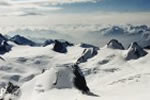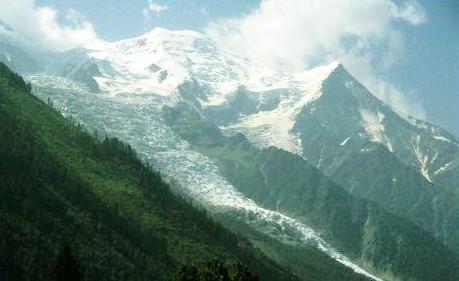


 |
 |
 |
In highland areas the most obvious glaciers features are usually those created by erosion, not deposition. Features such as corries, ribbon lakes, U shaped valleys and hanging valleys are typical of upland areas such as the Alps in Europe, the English Lake District and the Southern Alps in New Zealand.
Aretes
When a corrie is formed, its back and side walls tend to be steep and jagged, perhaps almost vertical. When two corries form next to each other, and their adjacent walls are eroded backwards until they meet, a narrow and pointed rock ridge is formed. This is often likened to a knife edge, with near vertical sides and a sharp top edge. This feature is called an arete.

Pyramidal Peaks
When three or more corries erode backwards and meet they cannot form an arete; it has steep sides but doesn't have the length to make a ridge. Imagine three corries at the corners of a triangle, eventually all eroding back and meeting in the middle. A sharp pointed pyramid shape is created. This is called a Pyramidal Peak, or Horn, and is a common shape for mountain tops in well glaciated areas.

We value
your ideas and suggestions. Please contact the
maintainer of this site.
This page
can be found at: http://www.geography-site.co.uk
Last update to
this statement was on:
February 23, 2006
© Copyright Geography Site